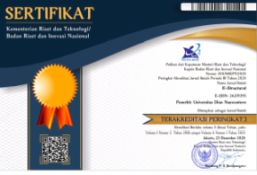"This Broadcast Is Being Watched Live by Millions of Americans": Vague Language in Jimmy Kimmel's Oscars 2017 Opening Monologue
Abstract
Full Text:
PDFReferences
Biber, D., Johansson, S., Leech, G., Conrad, S., & Finegan, E. (1999). Longman grammar of spoken and written English. Harlow, England: Longman.
Brown, G., and G. Yule. (1983). Discourse analysis. Cambridge: Cambridge University Press.
Crystal, Davy. (1975). Vague expression in English: Studies in language and communication. In Giuliana Garzone, James Archibald (Ed),
Discourse, Identities and Roles in Specialized Communication (pp.87-90). Peter Lang AG, International Academic Publisher, Bern 2010.
Carter, R., & McCarthy, M. (2006). Cambridge grammar of English: A comprehensive guide. Cambridge: Cambridge University Press.
Channell, J. (1994). Category of vague language: The use of vague language accros spoken genres in an intercultural Hong Kong corpus. In
J. Cutting (Ed), Vague language explored (p.161-2)
Cutting, J. (2007). Introduction to vague language explored. In J. Cutting (Ed.), Vague language explored (pp. 3-26). New York Basingstoke.
Koester, A. (2007). “About twelve thousand or soâ€: Vagueness in north American and UK offices. In J. Cutting (Ed), Vague language explored (pp. 40-61). Basingstoke: Palgrave Macmillan.
O’Keeffe, A., McCarthy, M., & Carter, R. (2007). “Relational language†From corpus to classroom: Language use and language teaching. Cambridge: Cambridge University Press
Trappes-Lomax, Hugh. (2007). Vague language as a means of self-protective avoidance: Tension management in conference talks. In Joan Cutting (ed.), Vague Language Explored, 117–137. Hampshire: Palgrave Macmillan
Cheng, Winnie and M. Warren, (2001). The use of vague language in intercultural conversations in Hong Kong. Article in English World-Wide 81–104. https://www.researchgate.net/publication/233613944
Zhang, Grace. (2011). Elasticity of vague language. Intercultural Pragmatics, 8-4, 571–599. DOI 10.1515/IPRG.2011.026
DOI: https://doi.org/10.33633/es.v1i2.2135
Article Metrics
Abstract view : 449 timesPDF - 810 times
Refbacks
- There are currently no refbacks.
Accredited by:
Indexed by:
In Collaboration with:

This work is licensed under a Creative Commons Attribution 4.0 International License.

























